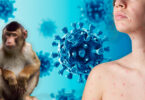Albinism is a hereditary defect that alters the production and metabolism of melanin, which translates into a total or partial absence of this pigment produced by cells called melanocytes and which is responsible for the color of the skin, hair and eyes.
The inheritance pattern of albinism is autosomal recessive, which means that the probability of the disorder being transmitted from one generation to another is low.
Those affected by albinism are called albinos and lack pigments in the hair, skin or iris of the eye.
The lack of skin pigmentation makes albinos more susceptible to sunburn and skin cancer. And it is that the fundamental physiological role of melanin is to protect the skin from the harmful effects of ultraviolet light, which is why people who live near the tropics are darker, since their exposure to the sun is greater, compared with people living in temperate climates. Albinism causes social rejection and, what is worse, albinos or, rather, some parts of their body, such as blood, bones, or organs, are considered in some African countries amulets against the evil eye. There are several types of albinism depending on the following skin involvements or not:
- Oculocutaneous albinism: it is the most common and affects the skin, eyes and hair.
- Ocular albinism: which affects only the eyes.
According to the defect of the enzyme involved in melanogenesis.
- Type 1 oculocutaneous albinism: it is due to a genetic defect of the tyrosinase enzyme. There are two subtypes of this form of albinism: Subtype 1A: This is the most frequent and severe form of albinism. Subtype 1B: The enzyme is minimally active and a small amount of melanin is produced.
- Type 2 oculocutaneous albinism: P gene involvement resulting in defective P protein.
- Oculocutaneous albinism type 3: it has been rarely described and results from a genetic defect in TYRP1.
- Type 4 oculocutaneous albinism: results from a genetic defect in the SLC45A2 protein.
- Oculocutaneous albinism with systemic manifestations: it is also called Hermansky-Pudlak syndrome.
The severity of the symptoms and clinical problems associated with albinism varies from one individual to another, depending on the type of genetic defect they suffer from.
Because albinism is a genetic disorder, there is no cure.
Treatment is directed at eye care and monitoring the skin for signs of abnormalities.
There is no known way to prevent albinism.
People who have the albino condition can live normal lives, however, the lives of people with Hermansky-Pudlak Syndrome can be shortened by lung or heart disease.







